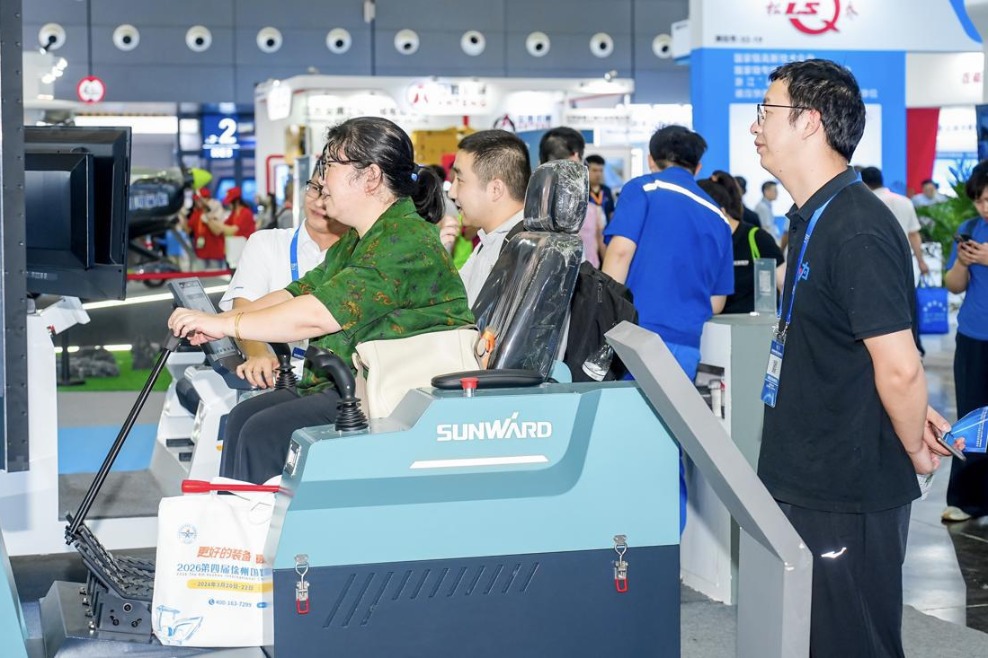Report: Chinese enterprises banking on digitalization for global expansion


Despite external uncertainties, Chinese enterprises are actively expanding their overseas footprint, with investments mainly focusing on advanced manufacturing and technology, according to a report from global consultancy Accenture.
Going global is a key way for Chinese enterprises to build long-term competitiveness, said Yue Bin, operations lead for Accenture Greater China, adding that the main driver of expanding activity around the globe is gradually shifting from State-owned to private enterprises.
The report showed that 92 percent of enterprises interviewed said globalization is a necessary step for them to maintain fast growth and 55 percent said they expect to optimize resource allocation and build up supply chain resilience through overseas expansion, while 49 percent aim to boost their innovative capacity through interaction with other markets.
Chinese enterprises are confident in their internationalization push despite rising geopolitical tensions and continued COVID-19-related disruptions. The report noted that 95 percent of the surveyed Chinese enterprises believed that their overseas businesses would see a compound growth of more than 5 percent in the next three years, and 52 percent of the enterprises anticipated that of over 20 percent.
The report used a four-tier category to rank the level of internationalization displayed by Chinese companies based on overseas revenue proportions — an initial stage, growth stage, established stage and fully globalized stage.
Given the country's vast domestic market, 32 percent of Chinese enterprises are still in the initial stage of globalization, with their overseas revenue accounting for less than 10 percent of the total. However, there were a significant number of enterprises in the established stage (26 percent), whose overseas revenue accounts for 20 to 50 percent of the total.
"We found that energy companies are inclined to choose South Africa and Brazil, while internet enterprises prefer to expand their presence in Southeast Asia," Yue said, noting that services and trade companies tend to prefer the European market.
However, there are some obstacles and challenges that hinder the development of Chinese enterprises in the varied and sometimes fickle political and economic landscape of overseas markets. Yue pointed out issues like risk management, regulatory compliance, cultural differences, inefficient operations and slow decision-making.
He suggested that enterprises build tailor-made operational models suitable for globalization, establish reliable, safe and regulation-compliant digital infrastructure, and leverage cutting-edge technologies to empower global operation.
Experts said that the continuous improvement of digital infrastructure for logistics and payments has reduced costs and brought increased convenience to firms seeking overseas expansion.
Domestic enterprises have shown increased demand for digital technologies, localized services, and ways to achieve safety and compliance during their globalization push, said Wang Chengfeng, research director of market analysis firm iResearch, adding that global cloud infrastructure and related services will help digitalize operations.
Early Chinese companies choosing to go abroad were mostly internet-related, including social media apps and video platforms, but traditional enterprises have established a global footprint and enhanced international competitiveness by adopting digital technologies, said Amazon Web Services, US tech giant Amazon's cloud service platform.
AWS added that Chinese enterprises are expanding their presence not only in traditional overseas markets like Southeast Asia, the United States and Europe but also in emerging markets like South America, the Middle East and Africa.
"The most useful thing for Chinese enterprises planning to go overseas is to improve management abilities, as they need to adapt to global organizational structures and diverse corporate cultures in different locations," said Jiang Han, a senior researcher at market consultancy Pangoal.
Building a diversified organizational structure that is suitable for the development of Chinese enterprises will inject stronger impetus for brands seeking overseas expansion, Jiang said.




































